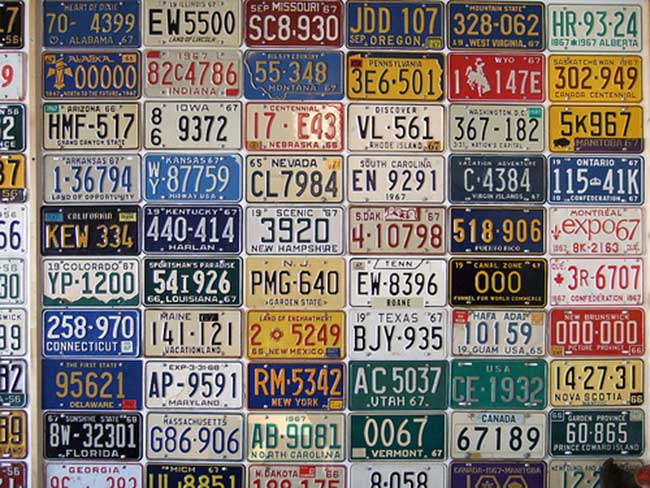Just when you thought there couldn’t possibly be another everyday mundane item that could be converted into an electronic version of itself, lo and behold, here comes the concept of electronic license plates. Yes, that’s right. As in, license plates that are made of special electronic paper, powered by the sun and the vibrations of your car (which means that these things will shine like a lighthouse beacon during pothole season), and can be altered remotely by the right agencies.

Regardless of how advanced they are, here’s one thing that electronic license plates can’t do..
Intrigued? Read on …
It Came From California, Kind Of
Well, they may be the first state to allow them, anyway. Late last year, the California legislature approved a bill that would allow electronic license plates by 2017. The company that’s actually spear-heading the effort is a startup located in South Carolina called Compliance Innovations.
An electronic license plate is basically an electronic display, featuring the same dimensions as your mundane license plate, and affixed to your car in the same location as a regular plate. These babies would be capable of receiving wireless signals, so the plates could be updated by the DMV without the driver having to mess with getting new registration stickers or updated plates. Now that’s a car upgrade for the 21st century.
If the car’s insurance has lapsed, the plates have expired or the driver’s license has been suspended, the electronic display could actually flash these messages on the plates themselves. And if the car gets stolen, the plate’s display could change to reflect this.
All this talk about changing the message makes one wonder if you can sell ad space on your plates as well. Or perhaps the first models could herald the arrival of this new technological marvel to the rest of the driving world with a scrolling message that says “Coming Soon: Electronic License Plates!”. Quick, get Marketing on the phone!
The Inevitable Downside to Electronic License Plates
You just know that no new tech comes along that doesn’t bring a downside into the picture as well, right? For starters, the cost is far steeper than a standard plate ($100 to make, versus seven bucks for normal plates). And as we all know, it’s cheaper than ever to put a car on the road and maintain it. Uh huh. Sure it is.
Privacy advocates are concerned about that sort of information falling into the wrong hands, or possibly abused by certain security and law enforcement agencies. Considering the flap these days about domestic surveillance, this innovation certainly raises a few eyebrows.
And of course, since we’re talking about electronics and wireless tech, there’s the threat of hackers making things interesting for people. For example, let’s say there are two people who despise each other, and one of them knows how to hack into the electronic license plate database. Now imagine that this hacker now has the power to have ANY message flash on her enemy’s license plate. The mind reels with horrific possibilities, most of them rated NC-17.
A Final Upside
Though not as innovative as satellite navigation, there’s a plus to electronic license plates that may tip the scales back to the beneficial side. If uninsured drivers are able to be identified quickly and easily, that gets them off the road faster, which would ultimately result in lower insurance premiums. Savings on insurance costs could go a long way towards minimizing the extra expense of the electronic plates. So in a way, that could end up paying for themselves.
